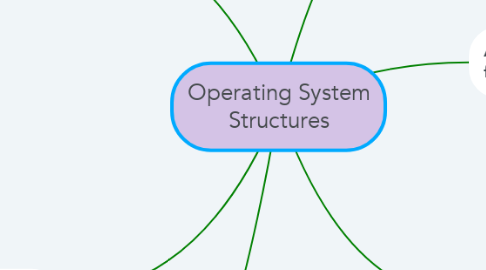
1. System calls
1.1. provide interface between a running program and the operating system
1.1.1. generally available as assembly language instruction
1.1.2. language defined to replace assembly language for system programming allow system calls to be made directly
1.2. three general methods used to pass parameters between running program and OS
1.2.1. 1. pass the parameter registers 2. parameter stored in block or in table, in memory and address of block passed as a parameter in a register 3. parameter placed, or pushed onto the stack by the program and popped off the stack by the operating system
1.3. Types of system call
1.3.1. 1. process control 2. file management 3. device management 4. information maintenance 5. communications 6. protection
1.4. communication takes place using message passing or shared memory
2. Layered approach
2.1. OS being divided into number of layers(level)
2.2. each built on top of lower layers
2.3. bottom (layer 0) is the hardware and highest (layer N) is the user interface
2.4. layer are selected such that each uses functions (operation) and services of only lower-level layers
2.5. advantages
2.5.1. simplicity of construction and debugging
2.6. disadvantages
2.6.1. 1. the careful definition and interaction of layers 2. less efficient
3. Microkernel
3.1. small operating core
3.2. contains only essential core operating system functions
3.3. services
3.3.1. 1. device drivers 2. file system 3. virtual memory manager 4. windowing system 5. security services
3.4. benefits
3.4.1. 1. extensibility 2. flexibility 3. reliability 4. portability
4. Operating System Services
4.1. User interface
4.2. Program execution
4.3. I/O Operations
4.4. File-system manipulation
4.5. Communications
4.6. Error detection
5. Additional operating system functions
5.1. ensuring efficient system operations
5.2. resource allocation
5.3. accounting
5.4. protection and security
6. OS Design
6.1. not solvable but some approaches have proven successful
6.2. start by defining goals and specifications
6.3. will be affected by the choice of hardware and type of the system: 1. batch 2. time shared 3. single user 4. multiuser 5. distributed 6. real time 7. general purpose
6.4. goals
6.4.1. 1. user goals 2. system goals

